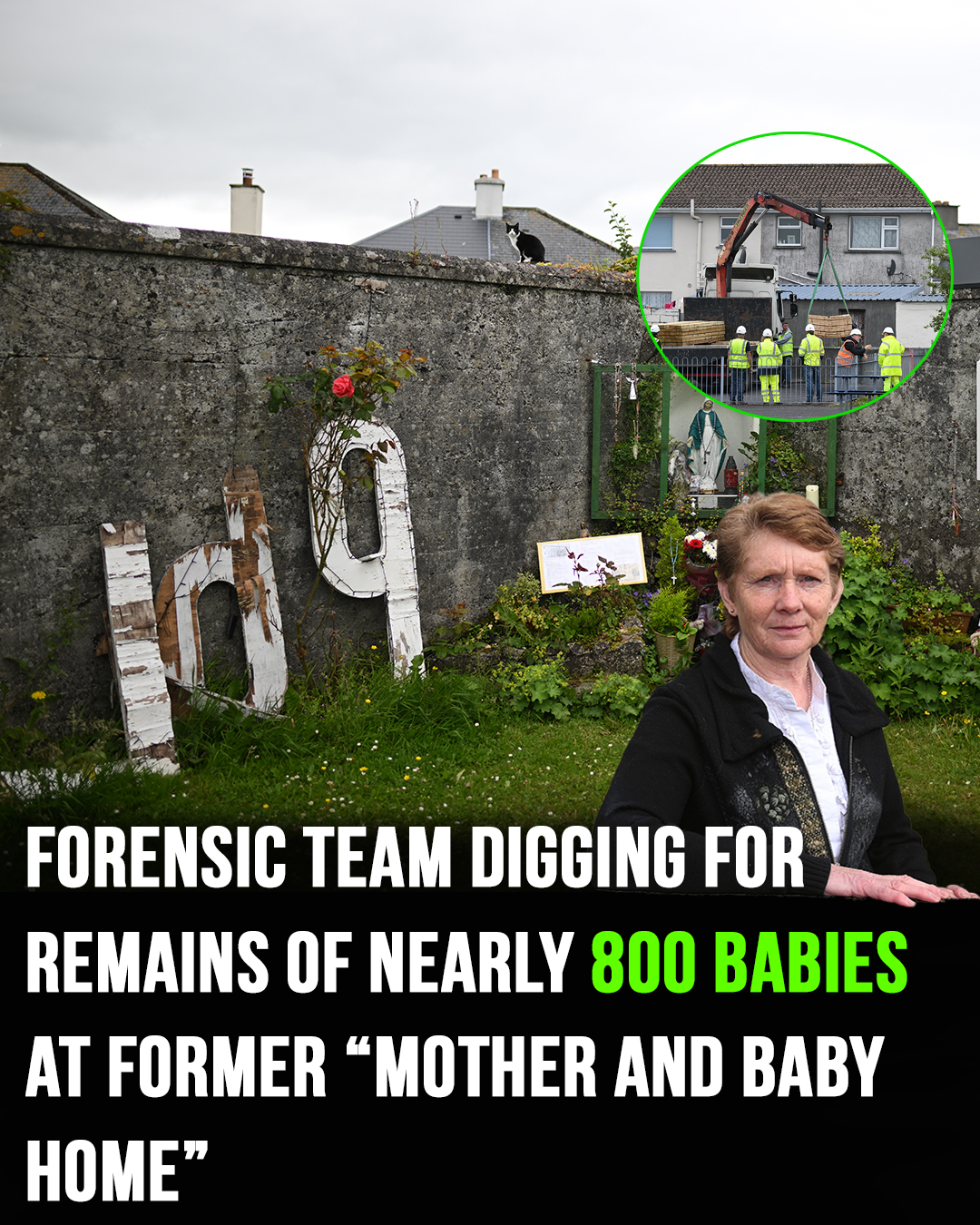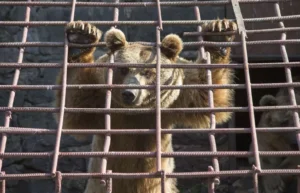A forensic team has recently initiated an excavation at the former site of the Bon Secours Mother and Baby Home in Tuam, Ireland. This harrowing operation seeks to uncover the remains of nearly 800 babies and children who tragically died at the institution between 1925 and 1961.
The investigation was sparked by the research of local historian Catherine Corless, who in 2014 uncovered evidence suggesting that the children who died at the home were buried in a disused septic tank. The ongoing excavation, which began on June 16, 2025, follows years of tireless advocacy from Corless and a growing recognition of the deep-rooted tragedy at the former home.
 Credit / Getty Images
Credit / Getty Images
The Dark History of Tuam’s Mother and Baby Home
The Tuam Mother and Baby Home operated for several decades under the supervision of the Bon Secours order of Catholic nuns. It was one of many such homes established across Ireland, intended to house unmarried women who were pregnant out of wedlock. These institutions served as both maternity wards and orphanages, as many of the children were abandoned, adopted out, or suffered from neglect and malnutrition. Sadly, the Tuam home was a site of extraordinary suffering, with a reported 798 children losing their lives under these appalling circumstances.
The remains of these children, whose ages ranged from late fetal weeks to around two or three years old, were discovered in 2016 and 2017 during preliminary investigations. Some of these children were buried in what is now believed to be a mass grave located in the site’s former septic tank, a macabre discovery that shocked both the local community and the wider world. Corless, who has led the charge to expose the home’s dark past, had long suspected that the children were buried there without proper burial rites, coffins, or even grave markers. Only two of the children were officially buried in the nearby cemetery, leaving the rest to be discarded in an unmarked and unconsecrated mass grave.
The Fight for Justice and Truth
Catherine Corless has been a vocal advocate for the truth surrounding the Tuam Mother and Baby Home for over a decade. Her research first uncovered the names of the 798 children, which led to public outcry and calls for a full investigation. It was only after Corless’ relentless work that the Irish government agreed to set up an official commission of investigation into the so-called “mother and baby homes” across the country.
Speaking to Sky News, Corless described the emotional weight of the excavation process. “I’m feeling very relieved,” she said. “It’s been a long, long journey. Not knowing what’s going to happen, if it’s just going to fall apart or if it’s really going to happen.”
While the Tuam site was only one of several institutions in Ireland where similar practices occurred, it has become a focal point for the national conversation about Ireland’s historical mistreatment of single mothers and their children. Between 1925 and 1961, Ireland’s “mother and baby homes” took in approximately 35,000 women, many of whom were forced into these homes by societal pressure. Tragically, many of the children who died there were buried without dignity, their stories erased from public memory until now.
 Local historian Catherine Corless at the site of a mass grave for children who died in the Tuam mother and baby home, Galway, as the Irish Government has bowed to national and international pressure over the scandal of the death of 4,000 babies who were buried in unmarked, unconsecrated and mass graves at homes for unmarried mothers. (Photo by Niall Carson/PA Images via Getty Images)
Local historian Catherine Corless at the site of a mass grave for children who died in the Tuam mother and baby home, Galway, as the Irish Government has bowed to national and international pressure over the scandal of the death of 4,000 babies who were buried in unmarked, unconsecrated and mass graves at homes for unmarried mothers. (Photo by Niall Carson/PA Images via Getty Images)
The Wider Scandal: Ireland’s Mother and Baby Homes
The Tuam investigation is part of a larger national reckoning that has uncovered the appalling reality of Ireland’s mother and baby homes. According to a 2021 inquiry, more than 9,000 children died across 18 such institutions in Ireland. These children, born to unmarried mothers, often faced brutal conditions, with high rates of infant mortality and neglect. Many mothers were forced to give up their babies, and the institutions often operated as adoption agencies, with little regard for the well-being of the children involved.
While the Sisters of Bon Secours, who ran the Tuam home, have issued a “profound apology” for their role in the scandal, the damage caused by these homes is immeasurable. Corless and other advocates for the victims continue to question how such inhumane treatment was allowed to persist for so long under the banner of a religious institution that preached care for the vulnerable.
“The church preached to look after the vulnerable, the old, and the orphaned, but they never included illegitimate children for some reason or another in their own psyche,” Corless lamented. “I never, ever understand how they could do that to little babies, little toddlers. Beautiful little vulnerable children.”
Ireland’s Ongoing Struggle for Justice
The excavation of the Tuam site marks a significant step in the ongoing effort to uncover the truth about the fate of these children. The forensic team will continue digging through the site in the coming weeks, carefully exhuming the remains in order to provide the children with a proper and dignified burial. The process also aims to confirm the identities of those buried there, offering some closure to the families who may have been affected by the tragic loss of their children.
However, the excavation is only one part of a much larger conversation about Ireland’s treatment of single mothers and their children in the 20th century. Advocates like Corless are calling for full accountability from the Irish government and religious institutions, demanding that the victims receive the recognition and justice they deserve.
The excavation also raises broader questions about the legacy of such institutions and how society has viewed and treated vulnerable women and children throughout history. The truth behind the Tuam Mother and Baby Home is not just a dark chapter in Ireland’s past, but a reminder of the need to address historical injustices and the importance of protecting the most vulnerable members of society.
Looking Ahead: Seeking Justice for the Forgotten
The Tuam investigation is a critical moment for Ireland as it continues to confront the injustices of the past. With the excavation of the site underway, Corless and other advocates hope that the victims of the Tuam Mother and Baby Home will finally be given the dignity and recognition they deserve.
“This is a story that needs to be told,” Corless said, her voice filled with emotion. “These babies deserve to be remembered, and they deserve to have their lives acknowledged.”
The excavation of the Tuam site is not just about uncovering the remains of nearly 800 babies and children; it’s about ensuring that their stories are heard and that the wrongs of the past are finally rectified.
For more information, visit these additional articles for further reading:
- Full Story: Man Loses 360 Pounds Naturally, Internet Rallies to Support His Next Step
- Tammy Hembrow’s Bikini Photos Are Stirring Controversy: Here’s Why Everyone’s Talking
- The Hidden Meaning Behind Princess Diana’s Cannes Gown: A Heartfelt Farewell to Grace Kelly
- Science Confirms Kelly Brook’s Perfect Body, But the Real Message Is Bigger Than Beauty
This article provides an in-depth look at the excavation process at Tuam, offering both a historical and personal perspective on this tragic chapter in Irish history. Through Corless’ tireless advocacy, the story of these children and their mothers is being brought to light, ensuring that their memory is never forgotten.



